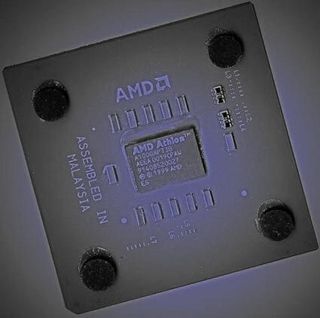CPU Scaling Analysis, Part 1: AMD Athlon
Introduction

Ever since the current Athlon processor based on the Thunderbird core was released, it has been very successful. AMD opened the market by keeping CPU prices significantly below the prices of comparable Pentium III models. With the new Pentium 4 being slower than the Athlon in the majority of benchmarks (even though Intel's latest chip runs at clock speeds of up to 1.5 GHz), there is only Intel's good-old Pentium III left as an alternative that could be used in affordable systems.
Besides its high price, Intel's Pentium 4 faces the handicap that it can only be teamed up with Rambus DRAM (RDRAM). Therefore the user has to pay two premiums for a P4-platform in order to obtain high clock speeds (400 MHz RDRAM and 1.5 GHz P4) although it might not even necessarily pay off in terms of performance.
Of course the Pentium III is an alternative, as there are several platforms available, supporting SDRAM or DDR memory. Many people already worry about the future of Socket 370, as the succeeding Pentium 4 is not pin-compatible. If that is an issue to you, you should also keep in mind that Pentium 4's Socket 423 is meant to be replaced by Socket478 and a new type of Pentium 4, code named 'Northwood' in September 2001.
This leaves AMD's Athlon. The SocketA motherboard market has grown to offer a large variety, as there are many different models available featuring similar highlights to their Pentium III cousins. Main chipset supplier is the Taiwanese company VIA. Their KT133A is frequently used and very reliable. Also ALi (Acer Laboratories, Inc.) returned to the big business with their MaGiK-1 chipset with DDR support. Last but not least AMD is shipping their AMD-760 chipset for Socket A and DDR memory interface.
The workstation and server market has not been served by AMD so far, as there is still no chipset for dual Athlon systems available. That gap will hopefully be closed by summer 2001 with the AMD-760MP chipset.
Stay on the Cutting Edge
Join the experts who read Tom's Hardware for the inside track on enthusiast PC tech news — and have for over 25 years. We'll send breaking news and in-depth reviews of CPUs, GPUs, AI, maker hardware and more straight to your inbox.
Most Popular

